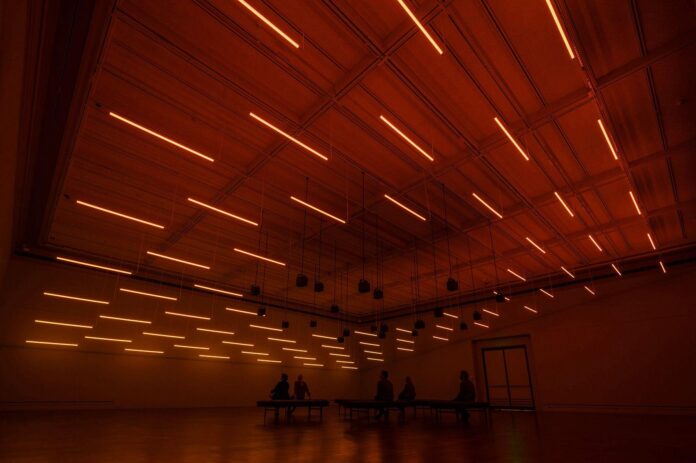An immersive installation that manipulates the dawn chorus of songbirds with artificial intelligence (AI) builds to a discomforting finale. This is not a daybreak that birders would recognise, but one conceived by the British-South-African artist Alexandra Daisy Ginsberg as both a celebration and lamentation of songbirds in peril.
Machine Auguries: Toledo at the Toledo Museum of Art, Ohio (until 26 November), Ginsberg’s first solo show in the US, was organised with the immersive art and technology firm Superblue.
“Really what this is about is asking people not to sit in the gallery and listen to an artificial dawn chorus, but to go outside and to protect what already exists,” says Ginsberg, whose work probes society’s idealisation of advanced technologies while nature languishes. Sometimes she speaks for nature, as with her installation on the nearly extinct northern white rhinoceros, and sometimes she bypasses humans altogether and designs directly for nature, as with Pollinator Pathmaker, an outdoor installation in Cornwall, in the UK.
Machine Auguries: Toledo sounds the alarm about precipitous declines in bird populations—on average 30% in the US and Canada—while technologies like AI proliferate. Birdsong is a critical form of avian communication to protect territory and find mates, disrupted by climate change, habitat loss, and light and sound pollution. Bird conservation is of particular interest in this northern Ohio region, which sits at the tip of Lake Erie and is a critical rest area along an avian superhighway for some of the 3.5 billion birds migrating to the US each year.
The installation’s 12-minute experience begins with the space quietly bathed in silvery blue light and the faint chirping of crickets. An American robin sings, soon to be joined by other songbirds whose chorus will be disrupted by machine-generated discord.
The project builds on a previous iteration in London in 2019, but the technology has advanced dramatically in the past four years. Ginsberg collaborated with the string theory physicist Przemek Witaszczyk and the Macaulay Library at Cornell University’s Lab of Ornithology, which has more than one million bird recordings. They created a dataset of tens of thousands of field recordings of birds from the Northwest Ohio region and trained a generative adversarial network to mimic 11 bird calls.
The installation pits natural bird calls against machine-generated ones. At first, the generated bird calls are rough and distorted. The machine calls strengthen and the light continues to rise until the artificial sky blooms into warm peach hues and the chorus reaches a crescendo. The light subdues, the sounds fade to a final call, and then silence. “It’s quite uncomfortable because everything has disappeared and it is over,” Ginsberg says. That is the feeling she hopes will push visitors to get out into nature and protect what is disappearing.

























